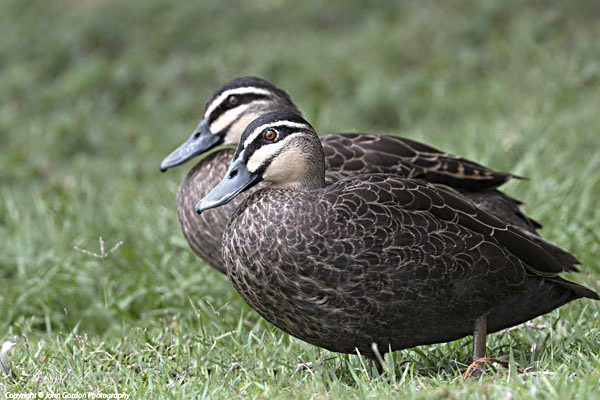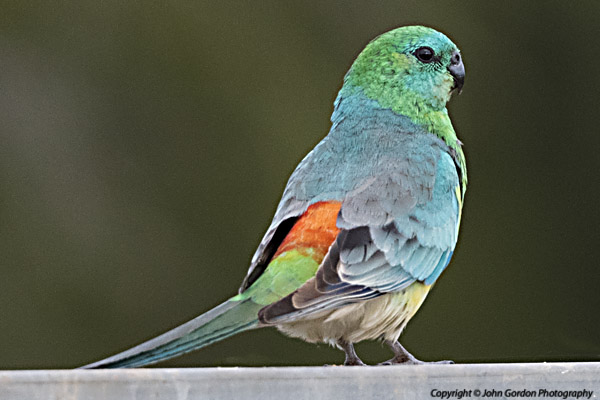New South Wales
Australia
Flooded farmland, bridges washed away and roads closed,
not the Australia Sandee and I had read about or expected. Rural areas had been hardest hit, including major population centres including Sydney. Historically Australia has always had bouts of drought, wildfires and floods. Following the devastating wildfires of 2019 the country was now in the third year of the
La Nina phenomenon, leaving many parts of the country wetter than normal.
 |
La Nina (shown in red) enveloping Australia while New Zealand surrounded is mostly spared.
(National Geographic) |
 |
Straw-necked Ibis and Little Ravens scavenge along a flooded roadside. Birds that would normally congregate around waterholes were scattered everywhere making birding more challenging.
|
Day 1-3 Sydney NSW
Cumberland State Forest, Marayla, Bushel's Lagoon, Boongala Gardens and Windsor area.
Our Australian trip began with three days of orientation in Sydney. Sandee and I took a tour of the city. At a windy Bondi Beach a large flock of shearwaters battled the way to an offshore island. They were too far away to tell the exact species.
 |
| Magpie Larks are common across the continent. |
A short walk from the hotel an Australian White Ibis bathed in an ornamental fountain. They are known as 'bin chickens' or 'tip turkeys' due to their scavenging habits.
.jpg) |
Australian White Ibis or 'Bin Chicken'.
|
I thought the background of multiple spray nozzles made for an interesting juxtaposition. I used my iPhone 8 to capture the fleeting moment, Bin Chicken or not, the bird was the first lifer of the trip. Downtown offered a chance to bird the Sydney Botanical Garden where I picked up a dozen new species. A great way to shrug off jet lag. Most large centres had botanical gardens, Rockhampton and Coff's Harbour were some of the best.
 |
| Pacific Black Ducks are found throughout Australia. |
The Sydney Natural History Museum (free admission) was the perfect way to spend a rainy afternoon, one hall was devoted to Australia birds, another to aboriginal history and culture. Both good primers for our upcoming adventure.
On Day 3, while Sandee indulged in retail therapy I met up with Birding Pal Barry Lancaster who took myself and another birder out to Cumberland State Forest on the outskirts of Sydney.
An early start made sure we had time to see parrots and cockatoos before they left their forest roosts to search for food in the surrounding orchards and farmland. The forest was full of birdsong and the ultimate skulker and vocalist, the Eastern Whipbird.
 |
| Eastern Whipbird. |
A colourful flock of Red-rumped Parrots feeding on a suburban lawn was another highlight. A ground feeder, small flocks are confined to south-eastern Australia.
By the end of the day and with Barry's expert knowledge I had added sixty-six more lifers to my Aussie list. An introduced Eurasian Blackbird, House Sparrow, Rock Pigeon and Common Starling were Australian ticks. I couldn't have asked for a better start.
 |
A Red-rumped Parrot on a garden fence.
 | White-faced Heron
Sydney Olympic Park. |
|
Sept 26-Oct 3 2022
Day 4 we picked up our camper and headed south toward Goulburn and inland to Jugiong. There we met Lyn Burden, another Birding Pal I had been corresponding with for months. Lyn had taken the trouble to make up a five day itinerary for us but due to inclement weather had decided to reverse the tour to avoid the rains. Our destination, Lake Cargelligo was five hundred kms inland. We stayed at a combination of free and paid campsites.
 |
| Double-barred Finch. |
We made numerous stops including Pioneer Park in Jugiong where Lyn found me a speckled Warbler.
 |
| Speckled Warbler. |
Other stops included, Campbell's Swamp, Fivebough Wetlands, Hooey Road Lookout and Lake Wyanger where we picked-up White-winged Chough, White-bellied Sea Eagle, Nankeen Kestrel and Sacred Kingfisher.
 |
| Eastern Yellow Robin |
The rains had made the roads treacherous with potholes everywhere, one of our planned campsites was even under water. Overall the free campsites offered the best birding opportunities
 |
| Black Swans take advantage of the recent rains |
At least we didn't have to deal with dusty roads which meant the camera was always out and ready to go. Later in the trip we had to drive through 14 kilometres of flooded roads to make our way back via the Blue Mountains to Sydney 600 kms to the East.
 |
| White-breasted Woodswallow. |
The wetlands, of which there were more than usual provided some good birds including Blue-billed Duck and Whiskered Tern. Soon I had photographed one hundred new species, way too many to list here. The scenery was spectacular, the rolling hills and thousands of sheep reminded us of Scotland and Wales. The economy and surrounding towns were all built around sheep and grain exports. We even had time to visit a shrine in honour of Don Bradman, the greatest cricketer of all time. That was a real treat.
 |
| A Grey Kangaroo bounds across a watery landscape. |
Birding can be dangerous as well as exhilarating. At one point while crossing a flooded roadway we felt our camper slide sideways and slip down stream before gripping the road and pulling us to safety. The whole incident still gives us goose bumps, something neither of us will ever forget. Something I would do differently should we return would be to hire a 4x4 Utility or UTE with tent on top rather than a camper van. A number of National Parks were totally unsuitable for our vehicle.
 |
| Crimson Rosella. |
Lake Cargelligo
"You missed the Major Mitchell's Cockatoo" Sandee announces as I returned from an afternoon birding session. Sandee loves to tag along on trips and seems happy to take in the sights and sounds. She potters around doing whatever non-birders do. Wildlife feels comfortable around her, probably oblivious to her presence. Later over supper she describes the many 'red, white and yellow' birds that visited the campsite during my absence, from her descriptions probably Noisy Miners, Peaceful Doves, Sulphur Crested Cockatoos, Galahs and Australian Magpies, all birds comfortable around humans. There were others I could never quite figure out. They would come within inches of her, looking for handouts or perhaps just curious. On one occasion, so deep into her novel that an Australian Brush Turkey crept up and scratched her toe, drawing blood.
 |
| Australian Brush Turkey. |
Then there were the lizards and giant centipedes, favourite prey for the Laughing Kookaburra. Fortunately we did not encounter any nasty spiders, scorpions and only one snake, a large Python that had wrapped itself around a tree at the base of the verandas few feet from our camper. It waited patiently to pounce on a hapless rodent or bird. It posed no risk to us, but at six feet long it was an imposing sight, especially in the dark and on our way to use the facilities. Creepy to say the least.
 |
| Wear sturdy boots, stay out of long grass and keep to trails was good advice. |
Thanks to Lyn's keen eye and knowledge of birdsong every day provided a new set of birds. Equally interesting were encounters with kangaroo and lizards. The red earth that held the recent rains was especially vibrant, wildflowers covered the landscape, and the smell of the eucalypts was something else
.
 |
Painted Button Quail in Nangar National Park.
|
Finally this was the Australia we had read about, far from the city and quite stunning. During one of our excursions Lyn spotted a pair of Wedge-tailed Eagle feeding on carrion, a few metres further on an Emu was browsing and a flock parrots flew overhead. Birdsong filled the air.
 |
Wedge-tailed Eagle.
Australia's largest bird of prey. |
After negotiating flooded roads we made our way back to Orange some five-hundred kms east of Sydney. At the botanical gardens in Orange I ran into a local birding group on their Sunday morning walk. They helped me pick-up two lifers, an Eastern Spinebill and a Spotted Pardalote.
 |
| Golden Whistler. |
Time was running out for the first leg of our trip. A few days later we were in the famed Blue Mountains where we viewed a Wollemi Pine at the Blue Mountains Botanical Gardens. The Wollemi Pine is one of the world's oldest and rarest plants dating back to the time of the dinosaurs. With less than 100 adult trees known to exist in the wild, the Wollemi Pine is now the focus of extensive research to safeguard its survival.
 |
| Eastern Rosella. |
Part two will cover our trip from Cairns and the Atherton Tablelands and the seventeen hundred km drive south to Brisbane.
Part three will cover the Ulur or Ayer's Rock portion including the return journey from Brisbane back to Sydney.
Stay posted.
"It's never ever too late to say G'day"
John Gordon
Langley/Cloverdale
BC Canada



.jpg)
















